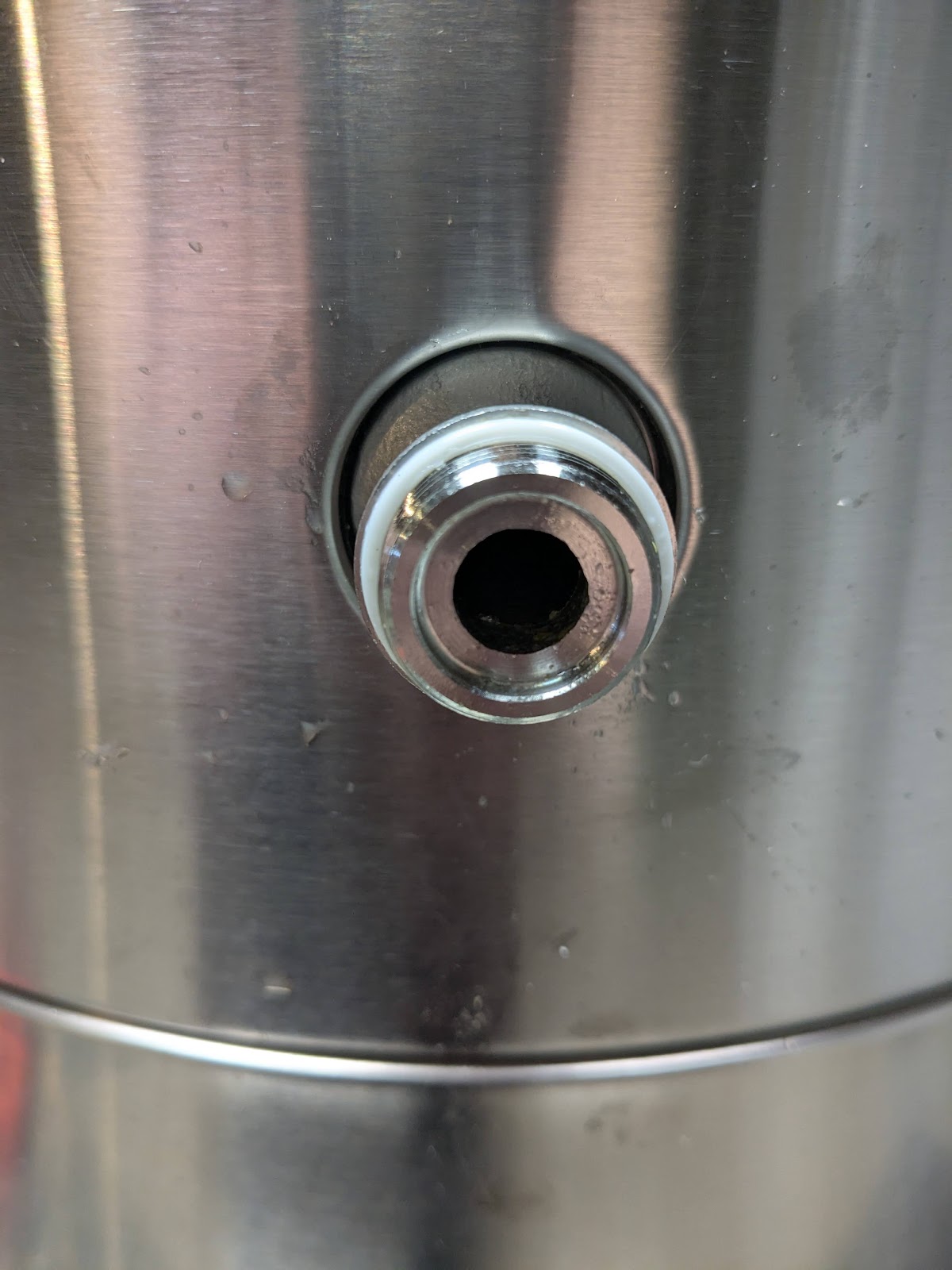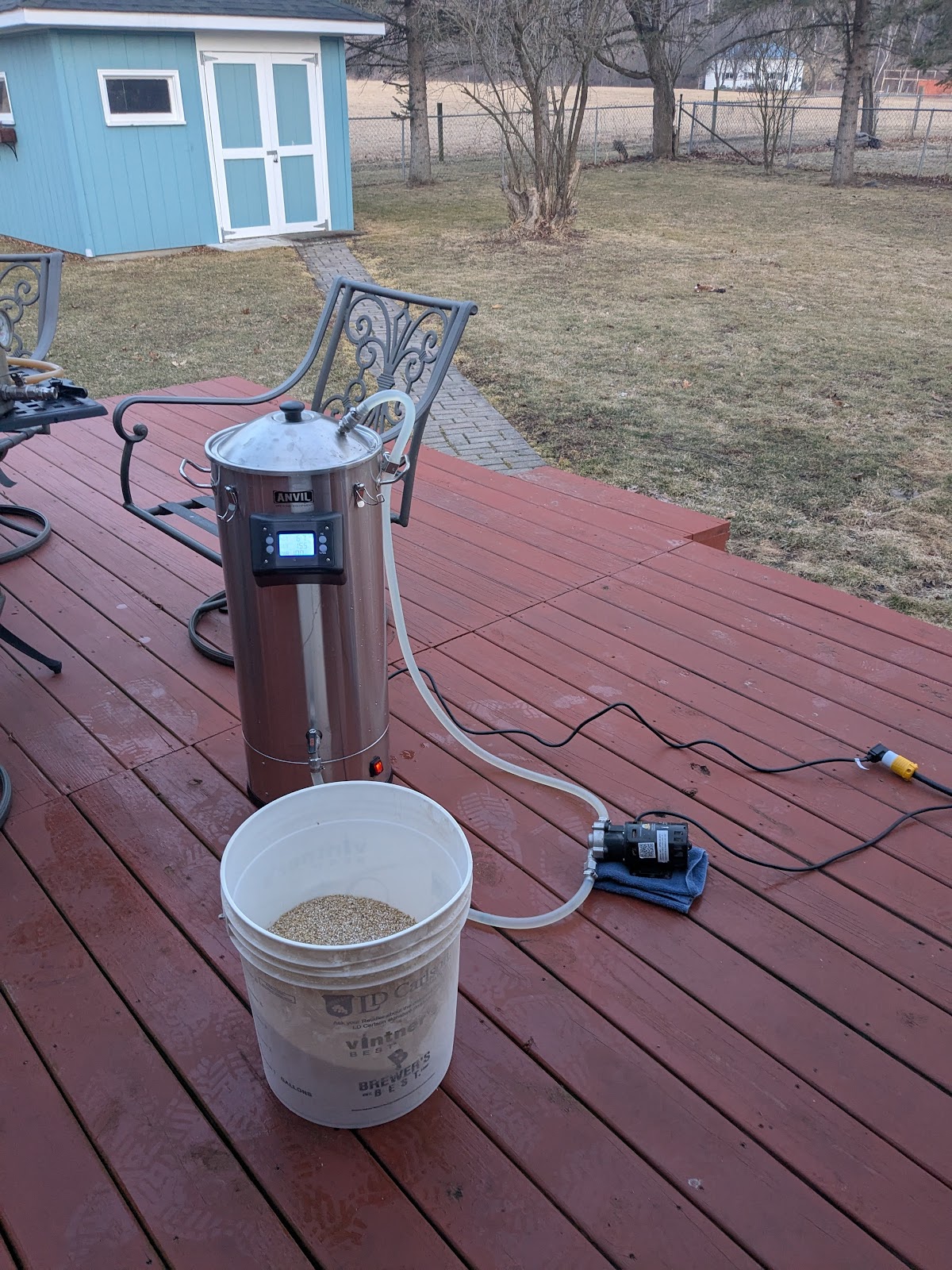I did not need new equipment. My trusty Wort Hog system is still chugging along and working great after 7 years. It can brew anywhere from 5 gallon batches, to 15 gallons (if the grain bill isn't too large, probably < 7% abv). I also have a portable propane based BIAB system that works just fine, but it's kind of a hassle to assemble everything together, then figure out the bag lifting situation since I usually use it outdoors.
So why buy a new system? Because at this stage in my life, I'm finding convenience to be a higher priority than it has been in the past, and because I love the hobby, and because I could afford it. Also, after 7 years of basement brewing, I'm tired of being trapped in the basement on nice days. I miss the days when I could spend a day outside brewing and enjoying the weather (although I really appreciate the basement brewing during those cold NY winter months).
So I purchased the Anvil Foundry 10.5 for a few reasons. I wanted to brew outside on nice days, I wanted more variety in my beer selections at home (I find it hard to brew just 5 gallons when I can brew 11, so I always opt for 11 on the Wort Hog), and I wanted a simple and easy system to use with minimal cleanup. That's why I purchased the Foundry specifically, after evaluating the many, many, choices we have these days in electric all-in-one systems, the Foundry was the most basic, minimal system with all the conveniences.
I also wanted the system I chose to be as modular as possible, so when something inevitably breaks, I can replace a part, and not a system. My Wort Hog is this way, and I've had to replace the boil coil, temp sensor cable, fix the PID, and after an accident that left 11 gallons of wort on my basement floor and a cracked weld, the kettle was replaced. These things happen and I like that I can fix, rather than replace. Almost everything can be replaced on the Foundry, from the Screen and Circuit board, to the temp sensor, perfect.
Pros:
- Controls are easy to use and read (more important every year)
- The malt pipe hook and drain system is so nice. Just lift, hook, and let drain.
- Can use with or without the recirculation system.
- Cleaning can be done with minimal effort and water usage (if you have the ability to recirc)
- It's lite and compact. I can put everything inside the unit and use it anywhere with a standard outlet available. I use the system in 220v mode at home, but the option for 110v is there.
- Delay timer for preheating water. Since I mostly use the system in 220v, I don't have a need for this, but it's a great feature for 110v operation.
- Recirculation system is separate, which saves you money if you don't want it, or you already have your own pump. I spent $8 to set mine up with recirc.
- The chiller works great, cooling in less than 20 minutes, and it comes with all the parts you need.
Cons:
There are only two cons for me, but they are significant in my eyes.
- After 4 brews, I'm getting terrible brew house efficiency. The first brew was 54%, the next 3 were 57% (I remembered to mashout, something I don't do when I batch sparge, and to stir every 15 minutes despite the recirc, but I think the mash out gave the extra 3%). They instruct not to do a fine crush or double crush so I have not been, but I think I'm going to adjust the crush for future batches. My Wort Hog can achieve 82% with the same crush I've been using. I am recirculating with a march pump.
- The ball valve spigot is terrible. It does not have a true 1/2 inch throughput, and it has an unnecessary angle so it can clog and/or cause cavitation in your pump if your flow rate is not set very minimally. You don't want to restrict flow on the inlet side, this is the problem with cavitation, not because the wort is boiling IMO, especially since it's not a problem on my other systems. Since you have to restrict flow so much, hops can clog the recirculation so you have to use a hop basket or bag. I don't like using the hope basket and I haven't used mine in years until this system.



I think I can fix both of those cons eventually. I'll put a new
full throughput ball valve on it (which will require a new pickup tube
and way to connect them). That's an extra expense for me, and I have to
find one that will work with the existing port. It shouldn't be too
difficult, but the system just went up at least $50. I think the
efficiency can be improved with a finer crush plus stirring the mash every
15 minutes to prevent compaction of the grain bed. If I can get to 70%
I'll be reasonably happy. It doesn't seem like a big deal, but if you're
buying 2lbs extra per brew day, lets call that an extra $6/brew, that
can add up. 70% is a pretty standard baseline for systems and recipes
and a reasonable expectation to have IMO.
I still really like the Foundry. Knowing what I know now, I would still buy it again. I would recommend it to anyone. New brewers and experienced brewers alike would enjoy using this system. I know I am.






